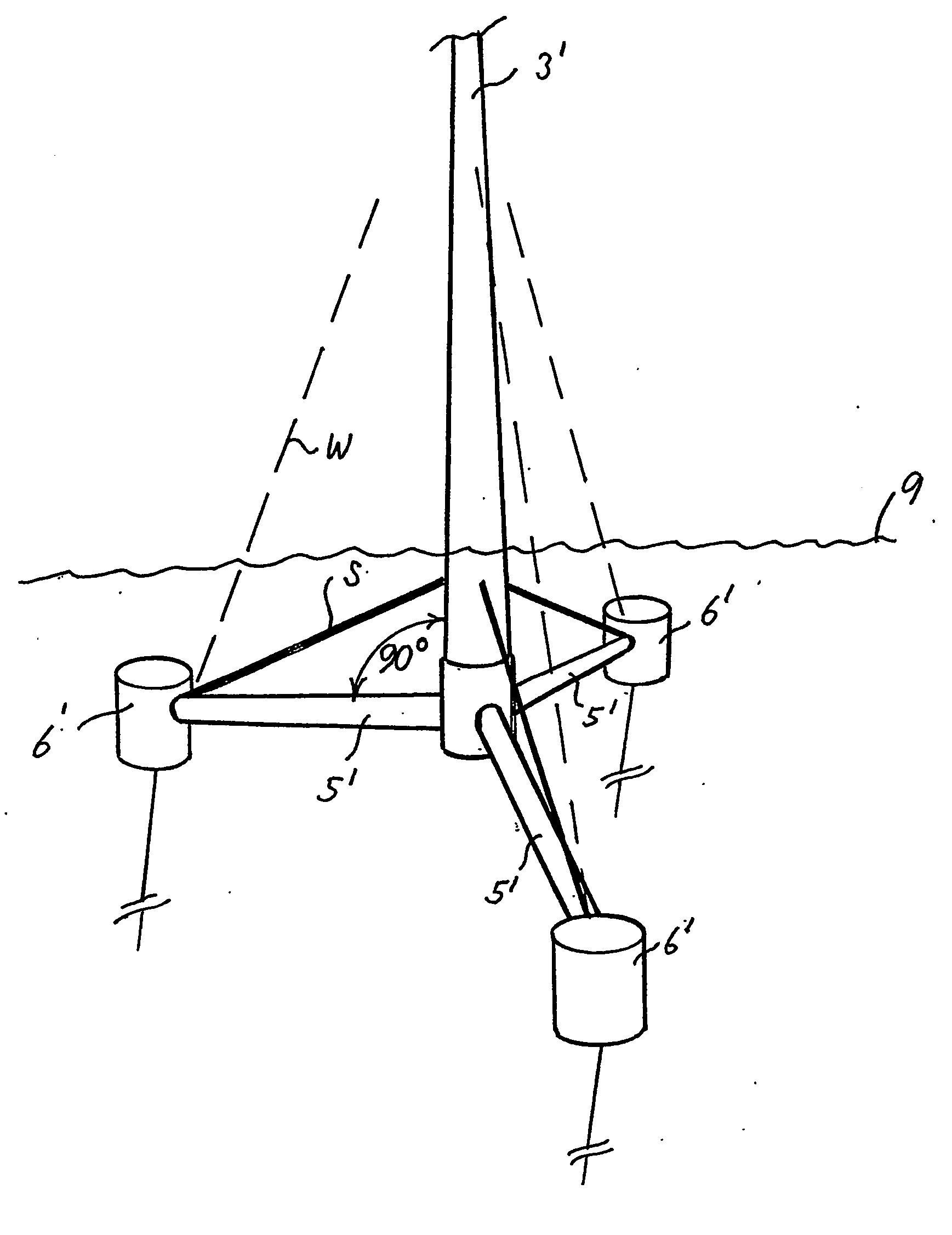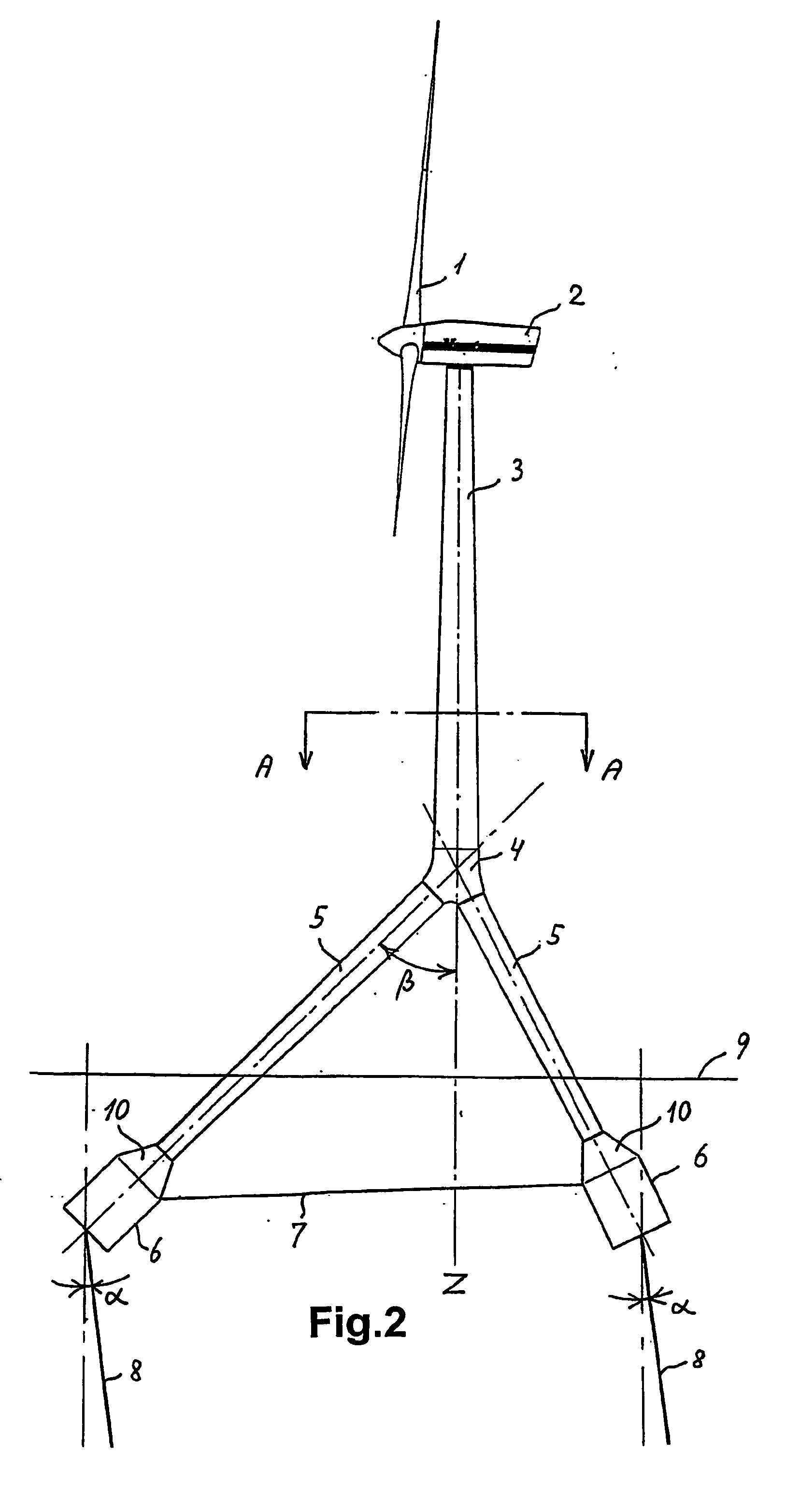Wind turbine with floating foundation
a technology of wind turbines and foundations, which is applied in the direction of floating buildings, floating islands, bulkheads/piles, etc., can solve the problems of low structural stability, unsatisfactory environmental protection, and high cost of solution, so as to reduce the weight of parts and improve structural stability. stability, the effect of reducing the price of the foundation
- Summary
- Abstract
- Description
- Claims
- Application Information
AI Technical Summary
Benefits of technology
Problems solved by technology
Method used
Image
Examples
Embodiment Construction
[0023] In the following, a detailed description of an embodiment of the floating tension leg foundation for wind turbines according to the invention is given.
[0024] A presently preferred embodiment of the invention is shown in FIGS. 2 and 3. A wind turbine comprising a rotor 1 and a nacelle 2 is placed at the upper end of the tower 3. The lower end of the tower 3 is connected to a node member 4, from which node member three leg sections 5 extend downwardly at an angle β relative to the vertical axis Z through the tower 3. As shown in FIG. 3, the three leg sections are distributed in the horizontal plane at identical angular intervals of 120 degrees.
[0025] At the ends of the leg sections 5 there are provided buoyancy bodies 6, in the shown embodiment in the form of a cylindrical body connected to the leg sections 5 via a conical transition member 10. One separate buoyancy body is connected to each of the leg sections. Although the buoyancy bodies are shown as cylindrical bodies in ...
PUM
 Login to View More
Login to View More Abstract
Description
Claims
Application Information
 Login to View More
Login to View More - R&D
- Intellectual Property
- Life Sciences
- Materials
- Tech Scout
- Unparalleled Data Quality
- Higher Quality Content
- 60% Fewer Hallucinations
Browse by: Latest US Patents, China's latest patents, Technical Efficacy Thesaurus, Application Domain, Technology Topic, Popular Technical Reports.
© 2025 PatSnap. All rights reserved.Legal|Privacy policy|Modern Slavery Act Transparency Statement|Sitemap|About US| Contact US: help@patsnap.com



